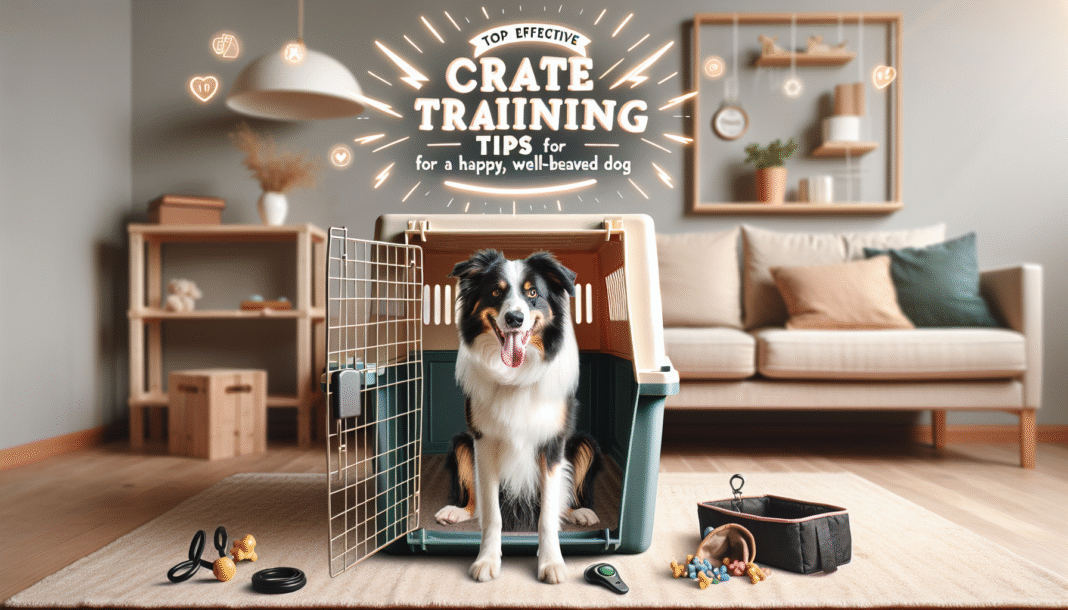Crate training can be one of the most rewarding experiences for both you and your furry companion. Not only does it create a safe space for your dog, but it also aids in housebreaking, provides security, and helps manage behavioral issues. Here are ten effective tips to ensure your crate training journey is smooth and successful.
1. Choose the Right Crate
When selecting a crate, size matters. Your dog should have enough space to stand up, turn around, and lie down comfortably without feeling cramped. If your dog is still growing, consider a crate that allows for adjustable dividers. This way, you can modify the space as your pup grows to prevent them from using one end as a bathroom.
2. Create a Positive Association
The first step in successful crate training is to create a positive association with the crate. Start by placing treats, toys, and a cozy blanket inside. Let your dog explore freely, without forcing them in. Whenever they enter voluntarily, praise them enthusiastically. This helps your dog view the crate not as a punishment but as a safe haven.
3. Implement Short Sessions
Begin with short periods of confinement in the crate. Start with just a few minutes while you are home, gradually increasing the time as your dog becomes comfortable. This helps your dog adjust to being alone in the crate without feeling anxious. Always reward them with praise or treats when they settle down.
4. Make It Routine
Establishing a routine is crucial. Dogs thrive on consistency, so try to use the crate at the same times each day. For instance, after meals, playtime, or walks, encourage your dog to go into the crate. Over time, this will help them understand that the crate is a regular and safe part of their day.
5. Avoid Using the Crate for Punishment
Never use the crate as a form of punishment. If your dog associates the crate with negative experiences, it will be counterproductive and could lead to anxiety. Instead, focus on positive experiences and ensure your dog feels comfortable and secure inside.
6. Use Command Cues
Teaching a command like “crate” or “go to your room” can help make crate training more effective. Use treats to guide your dog into the crate while saying the chosen command. This will help reinforce the behavior, making it easier for your dog to understand what you want them to do.
7. Gradually Extending Time Alone
Once your dog is comfortable being in the crate for short durations, start leaving the room for brief periods. Gradually increase the time you are away, so your dog learns that being in the crate isn’t permanent. Make sure to return before they become overly anxious to reinforce that you will always come back.
8. Monitor Your Dog’s Behavior
Keep an eye on your dog’s behavior in the crate. If they’re barking, whining, or showing signs of distress, wait until they are calm before letting them out. If you constantly let them out when they fuss, they may learn that whining is a way to get your attention.
9. Keep Crate Time Fun
To make crate time enjoyable, consider offering puzzle toys or chew items that can keep your dog engaged. This not only keeps them busy but also mentally stimulates them, allowing them to look forward to crate time rather than seeing it as a boring confinement.
10. Gradual Transition to Longer Spans
Once your dog is confidently using the crate for short periods, begin transitioning to longer spans. This can be beneficial for when you need to leave the house or during travel. Make sure to do this gradually, allowing your dog to adapt without stress. Combine this with plenty of physical exercise and mental stimulation before crate time to help them settle down more easily.
Final Thoughts
Crate training is an invaluable tool for nurturing a happy, well-behaved dog. The key to success lies in patience, positive reinforcement, and consistency. By following these tips, you can help your furry friend not only adapt to their new space but thrive in it, leading to a harmonious life for both of you. Happy training!





